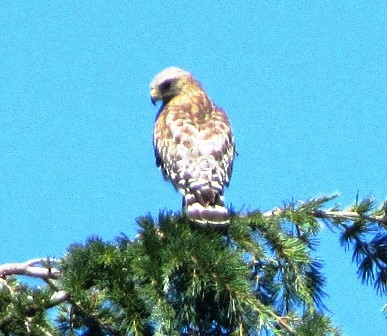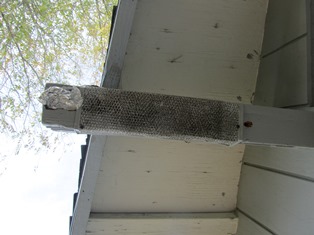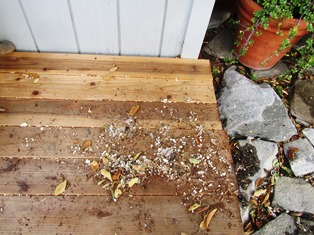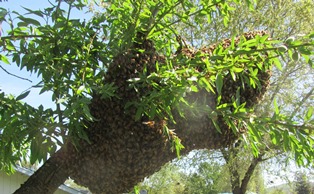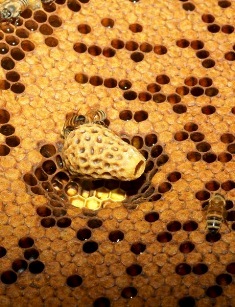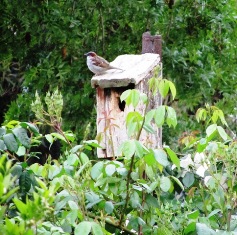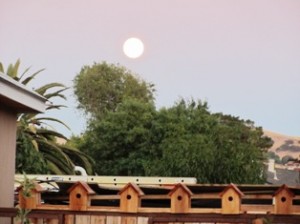A Sprained Leg Can Spell the End for a Chicken
Foxes have been routinely prowling my property and have claimed two chickens from my neighbor over the last few weeks. Thank goodness, they weren’t my hens. That said, one of my White Leghorns, a breed that originated in Tuscany but is widely raised here, developed a sprained leg, making her extra vulnerable to predators.
I noticed she was having trouble standing a few days ago. Then yesterday, I found her cowering under the hen house steps because the flock had been attacking her. I immediately removed her and tried to find a solution that would allow her time to heal without simultaneously having to find off foes.
My poultry run has its fencing wire buried into the ground and pieces wired together over the top. It’s built that way to prevent entry by raccoons, coyotes, and foxes that dig as well as hawks that hunt from the sky. But what to do with a flock of chickens that will peck to death another hen that get sick or injured?
Yesterday, inside the secure run, I built an inner circular area using poultry wire. Locating a large cardboard box, I filled it with nesting straw and stapled part of an old sheet as a curtain over the doorway. Then I put heavy blankets on the box for warmth (it’s been getting cold at night). I put a water dispenser and food outside her box and hoped for the best.
When I checked on the hen this morning, she was standing upright on both legs. She explored the inner run and then hopped back into the box to wait perhaps for the sun to warm the run. As quickly as she is healing, I might be able to integrate her back into the flock in a few days or a week.
The rains are coming tomorrow–another threat for the poor creature–so I’ll have to figure out another option to keep her dry and warm and safe. Still, she seems to be on the road to recovery and I hope returning to her scratching and foraging soon because she has stopped laying during this traumatic period. And she was one of my best egg layers; she’d lay an extra-large egg almost every other day. See, https://en.wikipedia.org/wiki/Leghorn_chicken
* * *
If you enjoy reading about farm topics (including gardening, beekeeping, and delicious recipes), check out my cozy mysteries A BEELINE TO MURDER and also THE MURDER OF A QUEEN BEE in the Henny Penny Farmette series (from Kensington Publishing).
These novels are available through online retailers such as Amazon, Barnes & Noble, Kobo Books, and Walmart as well as from traditional bookstores everywhere.
Find more info or to order, see, http://tinyurl.com/hxy3s8q
Now available in mass market paperback, this debut novel launched the Henny Penny Farmette series of mysteries and sold out its first press run.
See, http://tinyurl.com/h4kou4g
The Murder of a Queen Bee is the newest offering in the Henny Penny Farmette series. For more information, click on the link under the image.
The Woodpecker Saga Continues
The woodpecker is back and apparently intent on taking down our roof strut. As I’ve mentioned in a previous blog, I believe it is a Nuttall’s Woodpecker (Picoides nuttallii) and possibly a female because of its small size and lack of red color on the back of the head and nape of the neck. The bird was named for naturalist Thomas Nuttal in 1843. It doesn’t eat acorns, yet its habitat is California oak woodlands.
After making two holes large enough to all but obscure the creature pecking away inside the beam, the woodpecker took off after I shooed him away. But despite me screwing in a screen to cover the two gaping holes, the woodpecker has created two new holes and has made a heck of a mess.
My husband and I awoke to the rat-ta-tat-tating before daylight. After a quick inspection of the woodpecker’s drilling, Carlos told me to stick aluminum foil into the hole until he could return from work today and either saw off the dead wood and reinforce the beam or figure out another solution.
In the mess on the porch floor beneath the roof beam are what appear to be remnants of a nest. Is it possible that the woodpecker once constructed a nest inside that roof beam? They nest in tree cavities, so it isn’t too far of a stretch from a tree to a strut. This industrious female might be trying to create a nest for mating season (January to March), preparing for egg laying in April and May. And interestingly, the male incubates the eggs at night while the female sits on them during the day for a total of about 14 days.
While the woodpecker pecks, I’ve resigned myself to staying in the kitchen, baking our pumpkin and pecan pies for Thanksgiving. All the while, I hear the tapping of a drumbeat as the woodpecker either forages for food (it likes insects and spiders and some berries) or creates a cavity for a nest.
Honeybees Have Distinct Personalities
I don’t wear perfume in the garden least the bees think I’m a flower and light on me. But if they do, I let them walk around and explore. I don’t swat at them. Why would I? Honeybees are generally among the most docile of all bees.
Honeybees also have different personality types, according to research published in 2012 in the magazine Science and based on a study by Gene Robinson, University of Illinois entomology professor and director of the Institute for Genomic Biology. See, http://news.illinois.edu/news/12/0308bees_GeneRobinson.html
Scavenging and reconnaissance work carries more risk and challenge, whether you are human or honeybee. An adventuresome personality is usually best suited for that kind of work. Robinson and his researchers observed that the honeybees that do the nest and food scouting express distinct patterns of gene activity in molecular pathways that have been associated with thrill-seeking.
Whereas the adventurous scouts choose the thrill of taking off, the more intrepid and timid bees tend to stick closer to home, doing the tasks of building the hive, cleaning it, caring for the babies, and making honey. Robinson’s research debunks the ages-old idea that the colony’s workers are interchangeable.
America’s first honeybees arrived in from Europe by ship to the American colonies in the 17th century. It took approximately 200 years for the honeybees to get to the West Coast from that early introduction. Some went feral. See, http://www.orsba.org/htdocs/download/Honey%20Bees%20Across%20America.html
The most aggressive honeybee personality is the Africanized bee (aka, killer bees). These bees attack (often in droves) if they perceive a threat to their nest or queen. See, http://www.independent.ie/world-news/americas/couple-attacked-by-swarm-of-30000-bees-who-kill-their-two-horses-29456104.html
The Africanized bees have spread from Brazil, where honeybees from Europe (highly valued for pollinating crops and producing honey) were interbred with bees from Africa. These bees were inadvertently released in the 1950’s in Brazil and began to migrate north. They are now in Texas, New Mexico, Nevada, Arizona, and California. See, http://bees.ucr.edu/ahb-facts.html
All this information about work and personality types as it relates to honeybees makes me wonder: If we humans suited our work to our personality types, would we work as contentedly as do the bees in the garden and those in the hive?
Shelter for the Birds
An old birdhouse made by the Boy Scouts seemed like ornamental yard art until we attached it to a pole on the back fence and planted the Sally Holmes climbing rose beneath it. When early spring rolled around, we noticed a fine little specimen of a bird began flitting about the little wooden birdhouse. He liked the proximity of the house to perching places, among them, the climbing rose and nearby fig, apricot, and pepper trees.
The amenities were also nice. There was the birdbath below in the middle of a flower box, plenty of seed in the bird feeder, and clumps of bushes in which to flit about. He and his lady friend promptly moved in and began building a nest.
My husband Carlos, the architect, decided to refine the birdhouse with a snazier design. He used painted boards. But the birds liked the rough-hewn, unpainted wood of the house the Boy Scouts had made. Other birds came to check out the new row of houses, but so far none have moved in.
Carlos has remained undaunted. These little birdbrains just didn’t appreciate the beauty of what he was trying to give them, he reasoned. So he created what we have begun to call “the low rent district,” a series of unpainted birdhouses of simple design built together onto a trough that Carlos fills with seed to attract them. So far, this cluster of houses out in the open do not seem to have the appeal of the more rustic one atop the pole on the back fence.
Birds like security and safety for their nests, just as humans do. Hence, location of a birdhouse to woodlands and brush-filled fields is preferable to a birdhouse out in the open. The entrance into the birdhouse (the hole) size is equally important. Our little feathered lodger doesn’t want a nasty blue jay or other marauder raiding the nest he and his mate have painstakingly built for their eggs and hatchings.
Lately, we’ve noticed the little bird who moved in last year (and filled our yard with lovely song) is back. It’s only November, so he and his mate must be planning an early move-in, maybe before other birds notice the house is currently unoccupied. What’s that old adage, the early bird gets the worm? Well, around here, it’s the prime real estate; unless, of course, you don’t mind living for a bit in the “low rent district.”
 Facebook
Facebook Goodreads
Goodreads LinkedIn
LinkedIn Meera Lester
Meera Lester Twitter
Twitter





